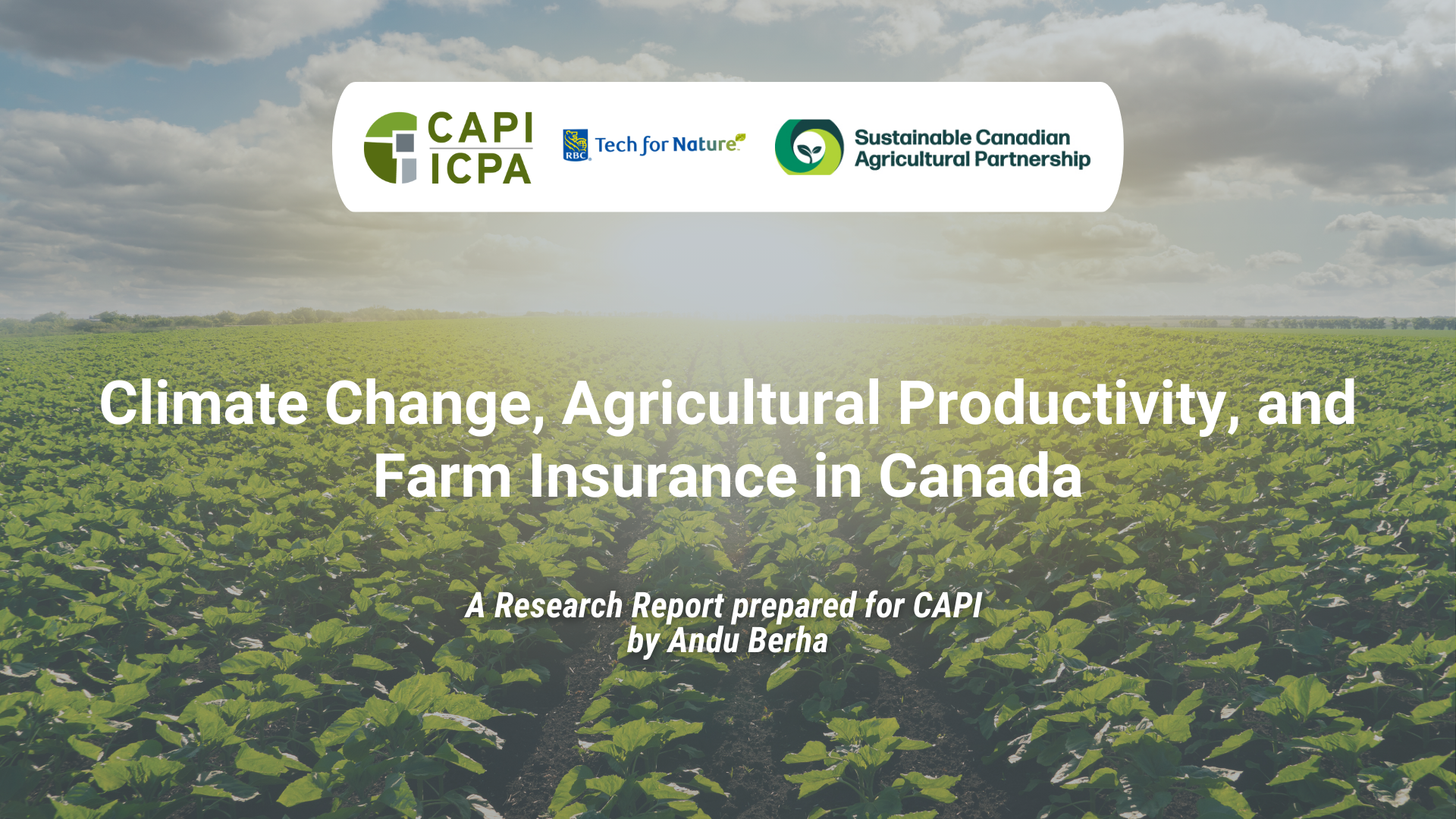Climate Change, Agricultural Productivity, and Farm Insurance in Canada

Note from CAPI
CAPI recognizes the importance of fostering and mentoring the next generation of thought leaders emerging from Doctoral programs across Canada, who are working in multi-disciplinary fields. Through CAPI’s Doctoral Fellows’ program, CAPI offers a small, innovative group of young students the opportunity to apply their knowledge and expertise to some of agriculture’s most critical policy issues.
The fourth cohort of CAPI’s Doctoral Fellows (2024-2025) was tasked with focusing their research on policies needed to address pressures on Canada’s land base and natural resources arising from agricultural production in the face of climate change, biodiversity loss, global population growth and food security concerns. This paper is the final deliverable of the program, showcasing the interdisciplinary nature of the fellows’ research as it relates to climate change, agricultural productivity, and farm insurance in Canada.
This Fellowship is supported in part by the RBC Foundation through RBC Tech for Nature as part of CAPI’s larger environmental initiative, Policies for Land Use, Agriculture and Nature (PLAN).
CAPI and the Doctoral Fellows would like to acknowledge the contribution of the four members of the Expert Advisory Committee who provided valuable feedback in the preparation of this report – Dr. Marie-Élise Samson, University of Laval, Dr. Tom Nudds, University of Guelph, Peter Sykanda, Ontario Federation of Agriculture, and Dr. Anatoliy Oginskyy, Alberta Ministry of Agriculture & Forestry.
Key Takeaways
- Climate variability is forcing Canadian farmers to adapt their crop choices. In this study, we show that under stable conditions, most Canadian farms would likely prefer to specialise in a few top-performing crops. However, climate variability is nudging them toward a more “jack-of-all-trades” approach, which generally results in lower output per acre.
- Crop insurance acts as a buffer against climate shocks. Our analysis shows that without insurance, farmers hit by climate shocks tend to diversify sharply, redirecting resources away from their most profitable crops, thereby sacrificing productivity. With insurance, these effects are muted: farms with strong insurance support were able to remain more specialised in high-value crops even after adverse weather, and as a result, sustained higher productivity than uninsured or underinsured farms.
- Rising climate risks are straining farm support programs. The cost of insurance payouts has surged alongside extreme weather. For example, total direct payments to farmers, driven largely by crop‑insurance indemnities, increased from under $1.9 billion in 2018 to nearly $5.7 billion by 2023. This trend underscores the urgency of enhancing resilience: support programs must be efficient and sustainable as claims mount.
- Tailored, proactive strategies are needed to protect both farm incomes and productivity. Policy measures should make insurance more accessible and responsive, promote climate-resilient crop choices and farming practices, and address regional differences in risk. By doing so, Canada’s farmers can better withstand the impacts of climate change while maintaining the productivity levels needed for food security and economic viability.
